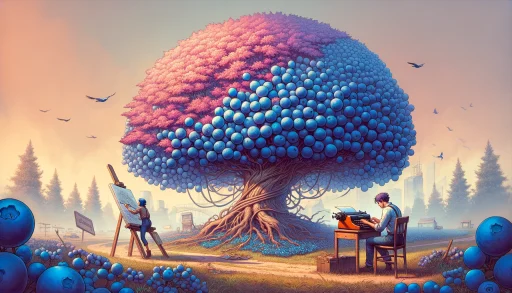There’s no question that AI will impact jobs. But which jobs are more likely to be replaced by AI, and which are being replaced right now? Instead of speculating like everyone else, I decided to look at cold, hard data: actual freelancing jobs from Upwork starting from November 1, 2022 (a month before ChatGPT was released) to February 14, 2024 to see what jobs have been negatively impacted the most.
Why analyze freelance jobs instead of actual jobs from large companies like Microsoft and Amazon? One, if there’s any going to be any impact to certain jobs, we’ll probably see it first in the freelance market because large companies will be much slower in adopting AI tools. Second, it’s clear from the latest Upwork earnings report that tech layoffs aren’t affecting freelance markets like Upwork as much. Revenue grew 14% year over year in their most recent quarter. Which means there won’t be many other factors to account for any declines in job postings.
Note: All of this data was provided by Revealera.com, a data provider that provides data on company hiring trends. Upwork’s job postings data is all publicly available in the form of a RSS feed too, so anyone can easily analyze this data too.
Here’s what you’ll learn from my study:
- Which job categories had the biggest decrease in volume
- Which job categories were the least affected
- Which job categories had the biggest decrease in hourly pay
- Which AI skills had the biggest increase in job postings
Which jobs had the biggest decrease in volume?
I took the 12 most popular job categories in Upwork, and analyzed the 84-day moving average in the # of jobs for that category(approximately 3 months). To my pleasant surprise, most of the job categories actually had an increase in the number of jobs since ChatGPT was released, with the exception of 3 categories that had large declines in jobs.

The 3 categories with the largest declines were writing, translation and customer service jobs. The # of writing jobs declined 33%, translation jobs declined 19%, and customer service jobs declined 16%.
Which job categories were the least affected?
Outside of these 3-4 job categories, most of the other job categories were not negatively impacted – in fact, the # of jobs actually went up.

Since ChatGPT was released, video editing/production jobs are up 39%, graphic design jobs are up 8%, and web design jobs are up 10%. Software development jobs are also up with backend development jobs up 6% and frontend/web development jobs up 4%.
On the surface, some of this isn’t surprising. I definitely expected writing jobs to decrease, as this is perhaps the most popular use case of ChatGPT, and that was reflected in the -33% decrease in writing jobs. Likewise, seeing customer service jobs decrease -16% wasn’t a huge surprise, as many companies are creating chatbots that can replace many customer service agents.
On the other hand, I was surprised to see graphics design, video editing/production, and even software development jobs go up, given all the anecdotal stories we’ve been hearing about people using ChatGPT to generate code, illustrations and even full featured videos.
I think there’s several ways to interpret this data. One is that these generative AI tools are already good enough to replace many writing tasks, whether it’s writing an article, or a social media post. But they’re not polished enough for other jobs like video and image generation. Personally, it takes many prompts before I’m happy with the image DALL-E creates for my blog posts. And that’s only because I’m not very picky.
So if you’re creating images that require a lot of little details, these AI tools might not be up to par yet. Likewise, for video, we’ve seen a few tools out there that seem to do a lot of crazy video scenes, but can they actually create a full-fledged trailer, or a tutorial video for customers? Not today, although that might change in few months.
The other explanation is that it simply will take time for users to learn how to use these tools effectively, and understanding what they can/can not do. If we take a look at the graph showing the # of writing jobs decreasing, it went down shortly after ChatGPT was released, but it wasn’t until August when the decline started to accelerate (almost 10 months after ChatGPT was released).
Which job categories had the biggest decrease in hourly pay
Is there a correlation between jobs that had a decline in volume and pay? Unfortunately, there’s no public way to know how much freelancers actually got paid for a job, so for this exercise, I had to extract the estimated hourly pay range specified in job postings, which will be an approximation on how much freelancers actually got paid.
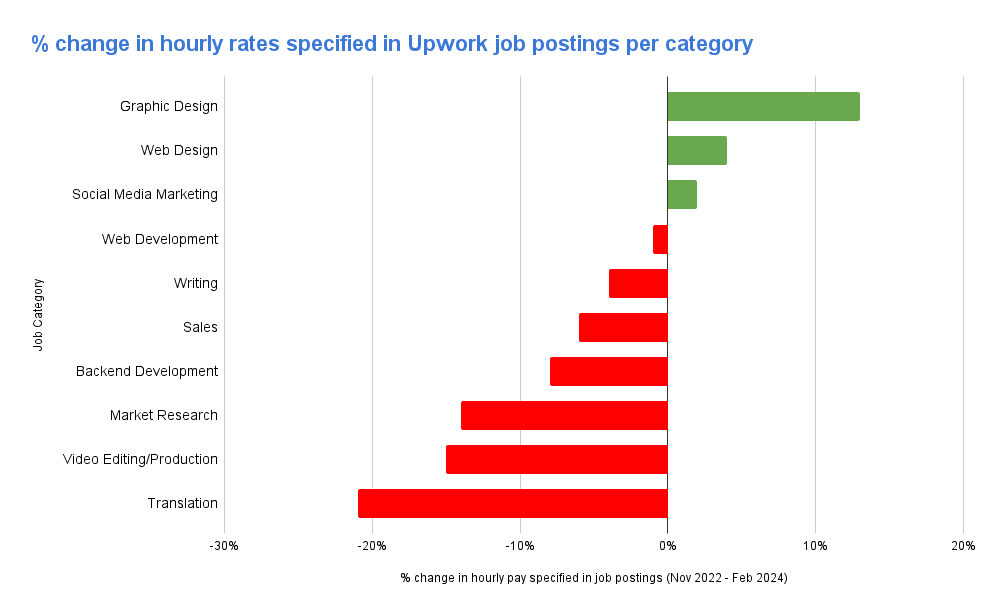
As you can see, translation jobs were definitely the worst hit with more than 20% decrease in hourly rates, followed by video editing/production and market research. Graphic design and web design jobs were the most resilient. Both of them not only increased in volume, but also increased in hourly pay a bit.
Overall, I think it’s hard to make any firm conclusions from this data. A lot of these changes in pay could just be normal, seasonal fluctuations. However, one takeaway from this is that graphic design + web design jobs are still in demand, and not being replaced by AI tools yet.
Again, I think this is because tools like DALL-E and MidJourney requires some knowledge and creativity. This is evident when you take a look at some job postings that explicitly are looking for experts in AI Image Creation. Unlike creating an article, creating visually stunning images with AI tools requires knowing how to construct a good prompt, how to tune prompts, as well as lots of trial and error.
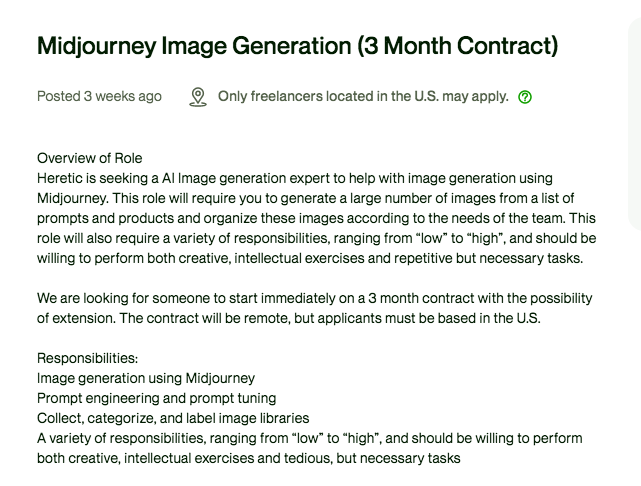
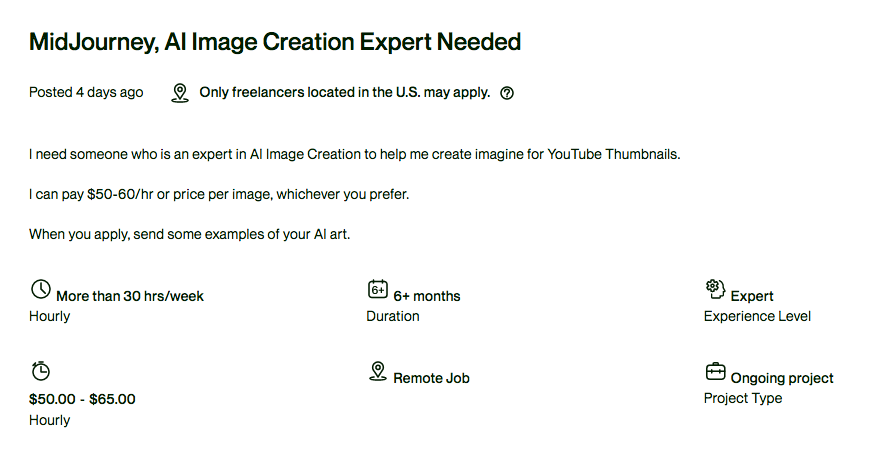
Which AI skills had the biggest increase in job postings
OK, so we know what jobs are declining in demand, but what jobs are actually increasing in demand because of AI?
My first instinct is there should be an increase in data annotation/labeling jobs to help train and fine tune their LLMs, and where better to find people to label data than a freelance platform? And while I wouldn’t expect most companies to hire many machine learning experts in Upwork, there should be at least a decent increase in machine learning jobs too, right?
It turned out both of these assumptions were dead wrong. While there was a initial increase in data annotation jobs, the # of data annotation jobs have been fairly flat in the past 10 months. And the # of machine learning jobs has actually decreased a bit since ChatGPT was released.

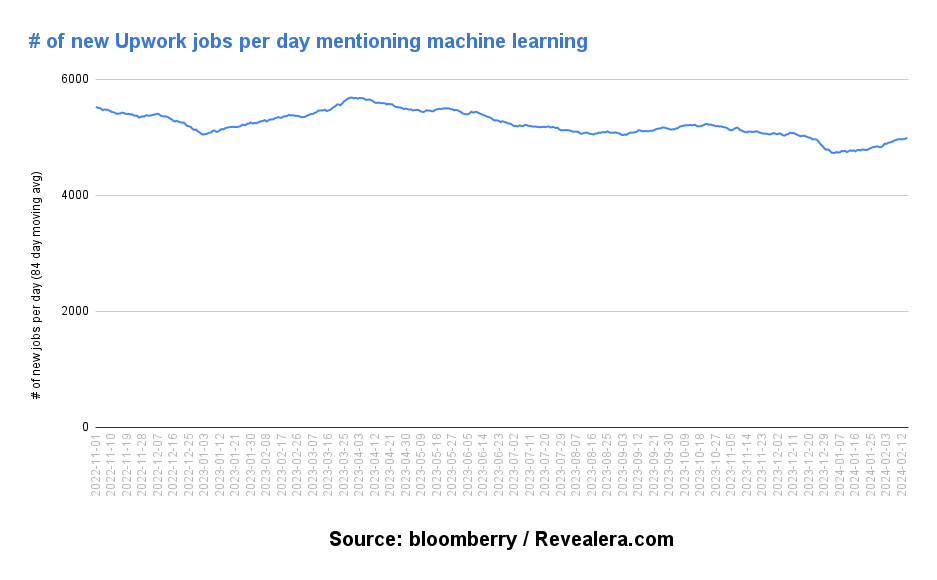
Maybe companies are hiring more machine learning engineers outside of Upwork. After all, who would trust a freelancer with important, specialized ML work, right? However, even when we look at the biggest companies in the world, there still hasn’t been any noticeable increase in demand for machine learning.
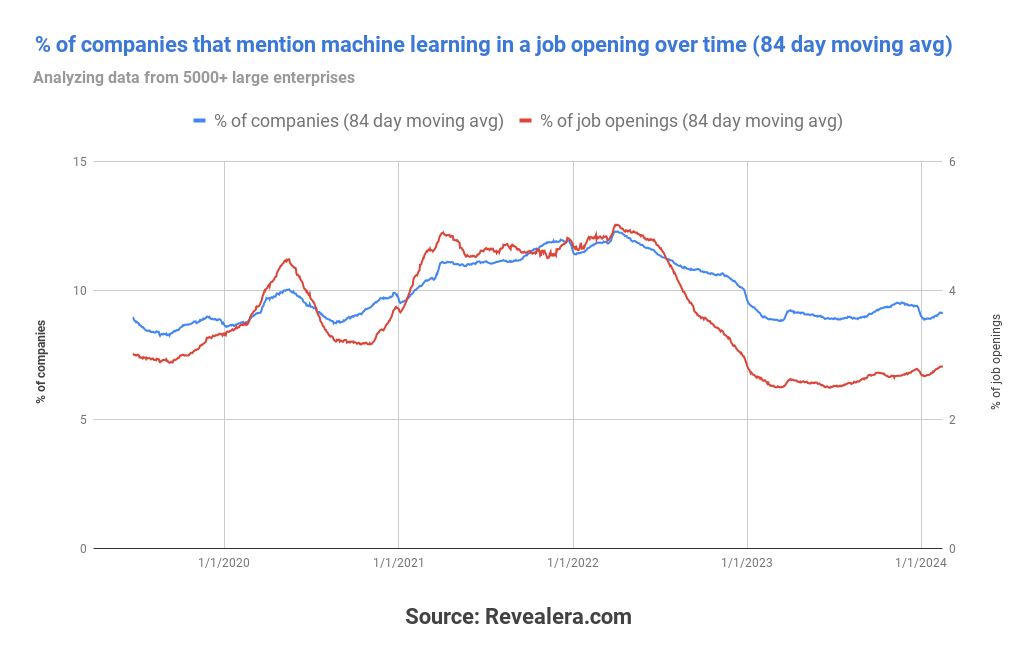
On the other hands, jobs like generating AI content, developing AI agents, integrating OpenAI/ChatGPT APIs, and developing AI apps are becoming the rage. But by far the #1 use case? Chatbots, with the # of jobs related to developing chatbots exploding 2000% since the release of ChatGPT and the OpenAI API. If there is a killer use case for AI today, it’s in developing chatbots.

I think one takeaway from this is that the vast majority of companies aren’t doing sexy stuff like developing their own LLMs models or tuning them with lots and lots of training data. It’s in integrating OpenAI’s API into their existing products and developing chatbots to replace customer service agents.
Conclusion
- We’ve seen a very noticeable decrease in writing, customer service and translation jobs in Upwork since the release of ChatGPT.
- Web design, graphics design, software development and video production jobs have been the most resilient and have not see any drop in demand (and even an increase)
- Whether that’s because AI tools aren’t good enough yet for those use cases, or the general public still haven’t learned how to use them effectively remains to be seen.
- The vast majority of companies are currently not focusing on training or fine-tuning their own LLMs, based on the lack of any increase in data annotation or machine learning jobs
- The most popular use case, by far for AI right now is in developing chatbots
Subscribe to get more data-driven research on hiring, labor and AI trends
Future articles will include: outsourcing trends, our best attempt to use data to find out which careers are least likely to be replaced by AI, and more! No fluff, no armchair predictions, just refreshing research backed by DATA

